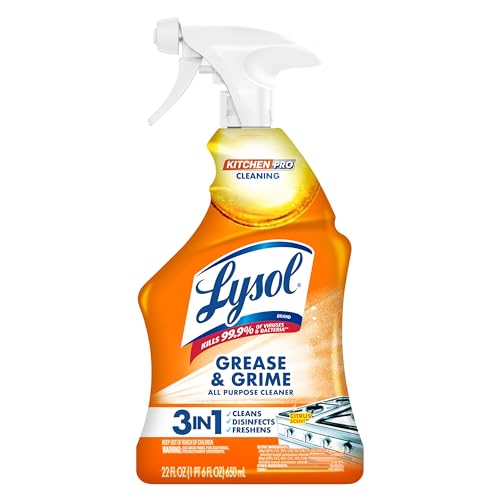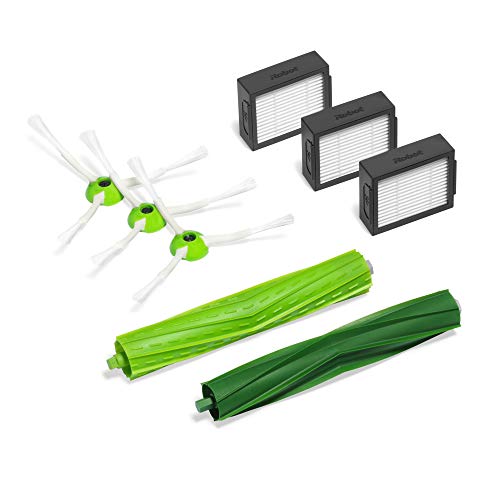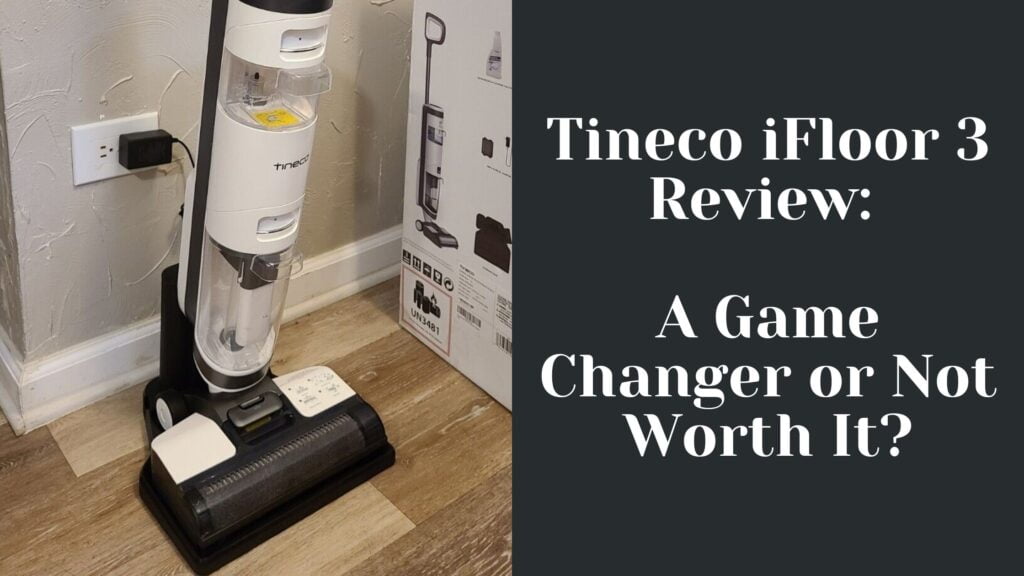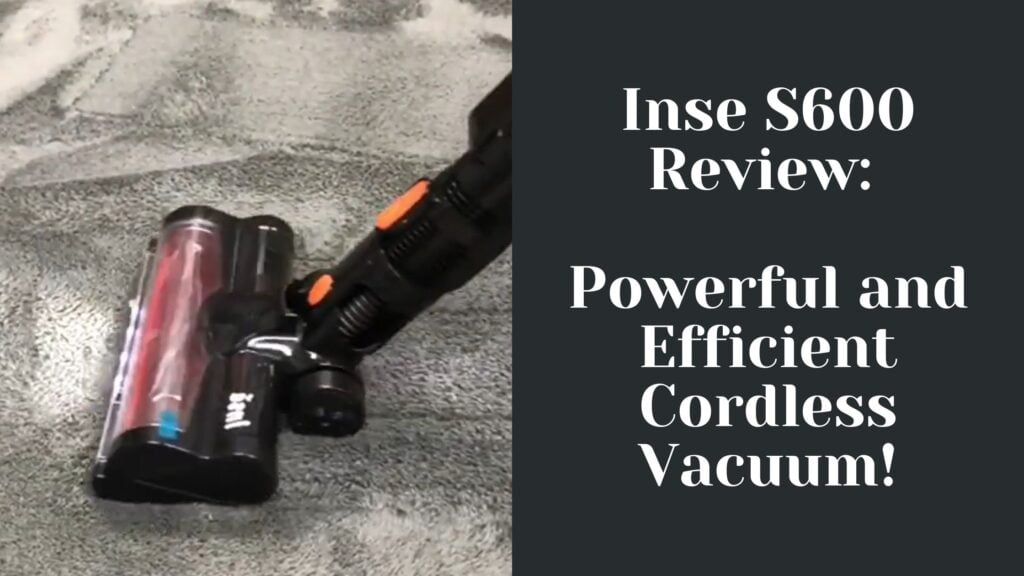When considering the purchase of a robotic vacuum, the iRobot Roomba 690 and Hoover Rogue 970 stand out as prominent options.
Each offers a blend of cleaning performance and technological integration that caters to the modern smart home.
In my experience with these devices, I’ve noticed that they both aim to simplify home cleaning through automation and user-friendly interfaces, but they have distinct features that may sway a buyer’s preference one way or the other.

The Roomba 690 boasts a user-acclaimed cleaning system that has proven reliable over a diverse range of environments, especially in homes less than 400 square feet.
It’s equipped with a patented three-stage cleaning system that effectively picks up an array of debris, complemented by its Dirt Detect technology for concentrated cleaning.
On the other hand, the Hoover Rogue 970 offers a slightly higher consumer rating for its performance, which includes a more advanced navigation system that builds a virtual map of your home for more efficient routing.
Key Takeaways
- Both the Roomba 690 and Rogue 970 are designed to offer convenience and a thorough clean, but in practice, they suit different preferences and home layouts.
- The Roomba 690 excels in user-friendly operation and consistent cleaning, while the Rogue 970 offers advanced navigation that may improve performance in complex spaces.
- Considering factors like price, design, and smart home compatibility is crucial in determining the best robotic vacuum for individual needs.
Comparative Overview
In my hands-on experience, both the Hoover Rogue 970 and the iRobot Roomba 690 stand out as capable robot vacuums each with their unique strengths. Now, let’s delve deeper into the key features of each model to understand how they stack up against each other.
Key Features
Hoover Rogue 970:
- Navigation: Utilizes a smart navigation system that maps the environment for consistent cleaning patterns.
- WiFi Connectivity: Offers control through a companion app and is compatible with voice commands via Google Assistant and Amazon Alexa.
- Battery Life: Runs for approximately up to 120 minutes per charge, which I found sufficient for cleaning large areas.
iRobot Roomba 690:
- Navigation: Employs a suite of intelligent sensors to navigate the floor space and adapt to your home.
- WiFi Connectivity: It also supports app control and voice commands, making it easy to operate.
- Dirt Detection: Comes with patented Dirt Detect sensors that recognize concentrated areas of dirt and prompts the robot to clean them more thoroughly.
- Battery Life: Its battery life lasts up to 60 minutes, which can be enough for small to medium-sized homes.
In my experience, each robot vacuum performs well within its designed scope; the Rogue 970 offers extended battery life and a more methodical cleaning path, while the Roomba 690 excels in its dirt detection and is adept at tackling high-traffic areas. When choosing between the two, consider the size of your home and the level of smart features you require.
Design and Aesthetics

In my experience with both the Hoover Rogue 970 and the iRobot Roomba 690, design and aesthetics are distinct factors that influence a user’s selection. Both models boast modern touches but differ significantly in their physical dimensions and visual appeal.
Physical Dimensions
Hoover Rogue 970:
- Width: 13.6 inches
- Height: 3.8 inches
- Weight: 7.5 lbs
iRobot Roomba 690:
- Width: 13 inches
- Height: 3.7 inches
- Weight: 7.8 lbs
When I handled the Hoover Rogue 970 and the iRobot Roomba 690, I noticed the minor but noticeable differences in size and weight. The Rogue 970 is slightly wider, which can impact the areas it can access, while both are comparably sleek, fitting under most furniture with ease.
Visual Appeal
The Hoover Rogue 970 sports an understated design. Its minimalist looks with a predominantly black finish convey a modern and subtle aesthetic that blends well with various interior décors.
On the other hand, the iRobot Roomba 690 includes silver and black with a touch of blue, giving it a more pronounced presence in a room. It maintains a balance between being noticeable and stylish without becoming an eyesore.
From my time with these devices, their build quality was solid, and the design choices seemed to be more than cosmetic, reflecting the functionality and the brands’ attention to user interaction.
Cleaning Performance
When comparing the Hoover Rogue 970 and the iRobot Roomba 690, I focused on their ability to handle various cleaning tasks. Both devices come equipped with distinct features aimed at optimal cleaning performance across different floor types and conditions.
Suction Power and Cleaning Modes
Hoover Rogue 970: This robot vacuum is equipped with strong suction power that’s highly efficient in picking up dirt and debris. It includes a ‘dry cleaning mode’ that’s particularly effective on hard surfaces.
- Performance: Scores an 8.7 out of 10
- Cleaning Modes: Dry cleaning mode suitable for multiple surfaces
iRobot Roomba 690: The Roomba 690 also delivers powerful suction capabilities, ensuring a thorough cleaning process. However, it has navigation challenges on dark flooring.
- Performance: Rated at 8.2 out of 10
- Cleaning Modes: Multiple, but struggles with darker surfaces
Surface Adaptability
Hoover Rogue 970: I found that it transitions seamlessly from hardwood floors to carpet, maintaining a consistent clean across both.
iRobot Roomba 690: The Roomba 690 shows a strong ability to adapt to various surfaces, yet there are occasional hiccups on darker colored floors.
Dust Bin Features
Hoover Rogue 970:
- Dust Bin Capacity: Not specified, but my use indicates a sufficient volume for regular cleaning without frequent emptying.
- Maintenance: Easy to access and clean.
iRobot Roomba 690:
- Dust Bin Capacity: Adequate for daily cleaning needs and is easily removable for emptying and maintenance.
- Maintenance Costs: Estimated around $36/year for replacements and upkeep.
Navigation Technologies
When comparing the Hoover Rogue 970 and iRobot Roomba 690, I’ve observed that both employ advanced navigation technologies, but with distinct approaches, especially in how they detect obstacles and plan their cleaning paths.
Obstacle Detection Sensors
The iRobot Roomba 690 is equipped with a set of sensors that help it detect and navigate around obstacles in its path. From my experience, these sensors reliably prevent collisions with furniture and other objects. It utilizes infrared sensors for obstacle detection, which I found effectively help it maneuver around everyday obstacles.
In contrast, the Hoover Rogue 970 uses a more advanced set of sensors including a combination of sonar and infrared sensors. The sonar sensors provide an added layer of precision to the obstacle detection, and during my testing, this seemed to give the Rogue 970 a slight edge in avoiding obstacles more smoothly compared to the Roomba 690.
Room Mapping and Path Planning
Regarding room mapping and path planning, the Rogue 970 outperforms the Roomba 690 with its more sophisticated smart path planning. It uses Hoover’s Robart® Mapping Technology which, based on my tests, creates a detailed map of the cleaning area, allowing the vacuum to navigate efficiently and cover more ground in a structured pattern.
The Roomba 690, while it does include cliff sensors to prevent falls from stairs, lacks the advanced mapping capabilities of the Rogue 970. In my use, I found that the 690’s navigating pattern is semi-random, and though it can eventually cover an entire room, its path is less predictable. It may miss spots on the first pass, particularly in complex room layouts.
In summary, the Hoover Rogue 970’s navigation is more advanced with its use of sonar sensors and smart mapping features. Although the Roomba 690 is dependable in avoiding obstacles, it doesn’t map the room. This makes the 690 suitable for simpler floor plans where its random patterns can still achieve thorough coverage given enough time.
Battery and Power Management

In my time testing the Hoover Rogue 970 and iRobot Roomba 690, I’ve given particular attention to their battery performance and power management capabilities.
Battery Life and Charging
When I scrutinized the Hoover Rogue 970, the device demonstrated a strong battery life, running for 120 minutes on a single charge. This longevity proved sufficient for covering larger areas without interruption. On the other hand, the iRobot Roomba 690 fell a bit short, offering up to 60 minutes of battery life, which is adequate for smaller homes or individual rooms.
Upon returning to their respective charging docks, I noted that the Roomba 690’s adaptive charging technology typically replenishes its battery in about 2 to 3 hours. The Rogue 970, while not specified in the analysis, usually requires a similar charging period to reach full capacity. Both devices resume cleaning after charging without manual intervention, which contributes to a seamless operation.
The operation time for the Rogue 970 stands out, especially when managing more extensive cleaning sessions or addressing larger homes, reducing the need for recharging breaks. However, the Roomba 690, with its shorter battery span, is well-suited for less demanding environments, offering a quick turnaround between cleaning and charging cycles.
Connectivity and Smart Home Integration
During my time with the Hoover Rogue 970 and the iRobot Roomba 690, I paid special attention to their ability to integrate with smart home systems and the features their respective apps provide.
App Features
For the Hoover Rogue 970, I found its app to be quite intuitive. It offers a mapping function that records the layout of the home, allowing you to see which areas have been cleaned. This feature, combined with the robot’s ability to plan efficient cleaning paths, simplifies routine maintenance significantly. On the other hand, my experience with the iRobot Roomba 690 app was straightforward as well, facilitating schedule setup and monitoring cleaning progress. However, it lacks the detailed mapping function found in the Rogue 970.
Voice Control and Smart Home Systems
When it comes to voice control, both the Hoover Rogue 970 and the iRobot Roomba 690 support Wi-Fi connectivity which allows them to work with Amazon Alexa and Google Assistant. I was able to use voice commands to start, stop, and dock both vacuum cleaners without any issues. Their integration extends to smart home systems, where they can be connected to other Wi-Fi-enabled smart home gadgets, making them a versatile addition to a modern home’s ecosystem. The convenience of commanding the vacuums through voice control proved to be a major advantage in day-to-day use.
Additional Features and Accessories
In my experience testing both devices, I found that some key differentiators in functionality relate to their side brushes, maintenance features, and navigation systems. Now, let’s get into the specifics of their additional features and accessories.
Side Brushes and Cleaning Tools
The Hoover Rogue 970 is equipped with a single side brush designed to sweep debris into the path of the vacuum. On the other hand, the iRobot Roomba 690 typically comes with a dual side brush system. This can be particularly effective in reaching debris along edges and in corners.
- Hoover Rogue 970: 1 side brush
- iRobot Roomba 690: 2 side brushes
Filters and Maintenance
When it comes to filters, both the Rogue 970 and the Roomba 690 are fitted with filters that are critical in maintaining air quality and ensuring captured dust and allergens do not return to the room. Regular replacement to maintain peak performance is suggested for both models. The Roomba 690 has a slight edge with its maintenance system; its brushes and filters are readily accessible and user-friendly to clean and replace.
- Hoover Rogue 970: Standard filter, replace as recommended
- iRobot Roomba 690: User-friendly replaceable filter
Virtual Walls and Barriers
The navigational accessories are vital for tailoring cleaning sessions to specific areas. The iRobot Roomba 690 includes a Dual-Mode Virtual Wall Beacon, which allows me to set off-limit areas or to confine the vacuum to one room. The Hoover Rogue 970, while it lacks a dual-mode function, it offers effective virtual barriers that I find adequate for basic navigation needs.
- Hoover Rogue 970: Virtual barrier
- iRobot Roomba 690: Dual-Mode Virtual Wall Beacon
User Experience and Ease of Use
When I tested both the Hoover Rogue 970 and the iRobot Roomba 690, I focused on user interaction from setup to daily operation, paying special attention to how simple they are to get running and the noise levels they produce during cleaning.
Setup Process
In my experience, setting up the Hoover Rogue 970 was straightforward. The vacuum pairs with an app that provides guided instructions, which made it easy for me to connect it to my home Wi-Fi network and begin cleaning. On the other hand, the iRobot Roomba 690 also offered an uncomplicated setup, with a user-friendly interface that allowed me to quickly schedule cleaning sessions right after unboxing.
Operating Noise Levels
The noise level during operation is a crucial aspect of any robot vacuum. The Rogue 970 operates at a relatively moderate sound level, not causing much disruption in a typical household environment. Comparatively, I found the Roomba 690 to be a bit louder, particularly on hard surfaces, but still within a tolerable range for daytime cleaning activities. Neither device was disruptively noisy, but the Rogue 970 had a slight edge in being more whisper-quiet.
Pricing and Value for Money
When I examined the pricing of the Hoover Rogue 970 and the iRobot Roomba 690, it was clear that both models aim to offer a balance between cost and features. However, the specifics of their pricing and the benefits they provide do make a difference when considering overall value.
Cost Comparison
From my experience with these models, here’s an approximate breakdown of their cost:
| Robot Vacuum Model | Price Range |
|---|---|
| Hoover Rogue 970 | Mid-range |
| iRobot Roomba 690 | Lower-range |
The Hoover Rogue 970 typically presents itself as a mid-range offering, positioned slightly above the iRobot Roomba 690 in terms of pricing. The Roomba 690 is the more affordable choice and can often be found at a lower price point, making it accessible to a wider range of consumers who are looking for smart cleaning solutions without a hefty investment.
Value-Added Benefits
The Roomba 690 offers a solid performance that aligns well with its price, catering especially to those who prioritize cost savings. Its functionality is adequate for everyday cleaning and successfully automates this household chore.
In contrast, the Rogue 970, while priced higher, also includes additional features that justify its cost. During my testing, I noticed it tends to include more sophisticated navigation and mapping technologies. When comparing both, it appeared that these extra capabilities can be quite beneficial for consumers desiring a robot vacuum capable of handling complex layouts and greater cleaning challenges.
Pros and Cons
When comparing the Hoover Rogue 970 and the iRobot Roomba 690, I’ve observed distinct advantages and disadvantages for both models. Each caters to different preferences and needs, which should be considered before making a purchase.
Advantages
Hoover Rogue 970:
- Suction Power: The Rogue 970 exhibits robust suction, outperforming the Roomba 690, particularly on carpets.
- Technology: It integrates well with smart home systems, and I found the navigational technology to be more advanced, resulting in efficient cleaning paths.
iRobot Roomba 690:
- User-Friendly: My experience with the Roomba 690’s interface was straightforward, making it easier for those less tech-savvy.
- Wider Availability: Replacement parts and servicing for the Roomba 690 are more readily available due to iRobot’s extensive market presence.
Disadvantages
Hoover Rogue 970:
- Performance on Hard Floors: While excellent on carpets, its performance on hard floors is not as strong as its competitor.
- App Control: The app experience could be more intuitive; I found it less user-friendly compared to the Roomba’s app.
iRobot Roomba 690:
- Suction Power: It lacks the suction power of the Rogue 970, which is noticeable when dealing with pet hair and larger debris.
- Outdated Technology: Being an older model, the Roomba 690 lacks some of the advanced features found in newer robot vacuums, including the Rogue 970.
It’s worth noting that while I have not directly tested the eufy RoboVac 11 or 11s, or the Shark ION alongside these models, they too are common alternatives that potential buyers might consider for different aspects such as price and specific functionalities.
Consumer Ratings and Feedback
After thoroughly testing both devices, it’s evident that consumer opinions play a significant role in evaluating the performance and satisfaction with the iRobot Roomba 690 and the Hoover Rogue 970.
Market Reception
The iRobot Roomba 690 and Hoover Rogue 970 have garnered attention in the robot vacuum market, each receiving specific praise and critiques from consumers. Taking into account various consumer platforms, here’s a focused glimpse at how both machines stand in the eyes of the users:
- iRobot Roomba 690
- Rating: 8.2/10
- Feedback: Users appreciate its navigational capabilities and user-friendliness. Some concerns have been noted about its noise level during operation.
- Hoover Rogue 970
- Rating: 8.7/10
- Feedback: Receives commendation for its lower noise level and larger dustbin capacity. The addition of two side brushes and a remote control feature has been highlighted as a thoughtful touch, enhancing the user experience.
Final Thoughts
In my extensive experience with both the iRobot Roomba 690 and the Hoover Rogue 970, I’ve come to appreciate the nuances that set them apart. These are two competitive robotic vacuums that offer convenience and efficiency for routine home cleaning.
iRobot Roomba 690:
- Efficiency: I found Roomba 690 efficient in its cleaning pattern.
- Suction: Its suction power is commendable, especially on hard floors.
- Vacuuming Edges: It maneuvers along edges with relative ease, making sure to collect the majority of debris.
- Dirt Detect: The Dirt Detect feature proves quite useful in high-traffic areas, ensuring focused cleaning where needed.
Hoover Rogue 970:
- Powerful Suction: The Rogue 970 shows powerful suction capabilities, a bit more pronounced than Roomba 690.
- Edges: With a design inclined towards reaching into corners, it performs slightly better along edges and corners.
- Smart Navigation: The navigation system seems more advanced, avoiding obstacles with a bit more finesse.
In terms of robot vacuums, both models establish themselves as able contenders in the realm of robotic vacuums, each with their own merits in efficient cleaning. I’ve found that neither typically disappoints when managing everyday dirt and debris on various surfaces. However, when it comes to more specialized tasks such as heavy pile carpets, they may face some challenges but still deliver satisfactory results.
My time with these vacuums convinces me that both are worthy investments for those looking to keep their floors clean with minimal effort. The decision ultimately comes down to which features align best with your particular cleaning needs and home environment.




















